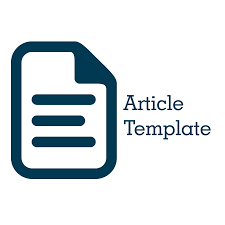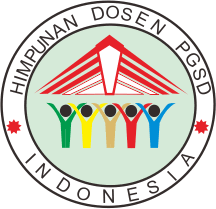Peningkatan pemahaman dalam mengembangkan pembelajaran berdiferensiasi melalui metode pelatihan dan pendampingan pada guru sekolah dasar
Abstract
Abstract. The purpose of this study was to determine the increase in the understanding of elementary school teachers in developing differentiated learning through training and mentoring methods. This research is a quantitative descriptive study with a one-group pretest-posttest research design. The sample in this study were teachers in Kendal District, Ngawi Regency, East Java Province. The data collection technique used is a test. Data were analyzed using N-Gain. The results showed an increase in teacher understanding in developing differentiation learning. The pre-test showed an average score of 62.07 while the post-test increased with an average score of 85. Thus, teachers can improve their pedagogical skills in developing differentiated learning.
Keywords
Full Text:
PDFReferences
Referensi [1] Menteri Pendidikan dan Kebudayaan. (2020). Modul Pembelajaran Diferensiasi. Jakarta: Kemdikbud. [2] Mills, M., Monk, S., Keddie, A., Renshaw, P., Christie, P., Geelan, D., & Gowlett, C. (2014). Differentiated learning: from policy to classroom. Oxford Review of Education, 40(3), 331–348. doi:10.1080/03054985.2014.911725 [3] Morgan, H. (2013). Maximizing Student Success with Differentiated Learning. The Clearing House: A Journal of Educational Strategies, Issues and Ideas, 87(1), 34–38. doi:10.1080/00098655.2013.832130 [4] Tomlinson, C. A., & Imbeau, M. B. (2010). Leading and managing a differentiated classroom. Alexandria, VA: ASCD. [5] Van Geel, M., Keuning, T., Frèrejean, J., Dolmans, D., van Merriënboer, J., & Visscher, A. J. (2018). Capturing the complexity of differentiated instruction. School Effectiveness and School Improvement, 1–17. doi:10.1080/09243453.2018.1539013 [6] Tobin, R., and A. McInnes. 2008. Accommodating differences: Variations in differentiated literacy instruction in grade 2/3 classrooms. Literacy, 42(1): 3–9. [7] Data Evaluasi Pendididkan Kabupaten Ngawi [8] https://npd.kemdikbud.go.id/ [9] Dinas Pendidikan Ngawi. Surat Edaran 321/211/404.101/2019 tentang kebijakan kompetensi guru lingkup Kabupaten Ngawi. [10] Eko, W. S. (2015). Manajemen Pengembangan Sumber Daya Manusia. Yogyakarta: Pustaka Pelajar. [11] Direktorat Bantuan Sosial. (2007). Pedoman Pendamping pada Rumah Perlindungan dan Trauma. (D. S. RI, Ed.). Jakarta. [12] Shareefa, M. (2020). Using differentiated instruction in multigrade classes: a case of a small school. Asia Pacific Journal of Education, 1–15. doi:10.1080/02188791.2020.1749559 [13] Stollman, S., Meirink, J., Westenberg, M., & van Driel, J. (2021). Teachers’ Interactive Cognitions of Differentiated Instruction: An Exploration in Regular and Talent Development Lessons. Journal for the Education of the Gifted, 44(2), 201–222. doi:10.1177/01623532211001440 [14] Sugiyono. 2013. Metode Penelitian Pendidikan Pendekatan Kuantitatif, Kualitatif, dan R&D. Bandung: Alfabeta. [15] Leah Herner-Patnode Hea-Jin Lee. 2021. Differentiated Instruction to Teach Mathematics: Through the Lens of Responsive Teaching Mathematics Teacher Education and Development 2021, Vol 23.3, 6-25. [16] Amenah Kareem Hussein,. (2021). The Effect of an Educational Program Using the Differentiated Instruction Strategy in Learning Long Jump Effectiveness. Annals of the Romanian Society for Cell Biology, 25(6), 5837–5846. Retrieved from https://annalsofrscb.ro/index.php/journal/article/view/6599
Refbacks
- There are currently no refbacks.


